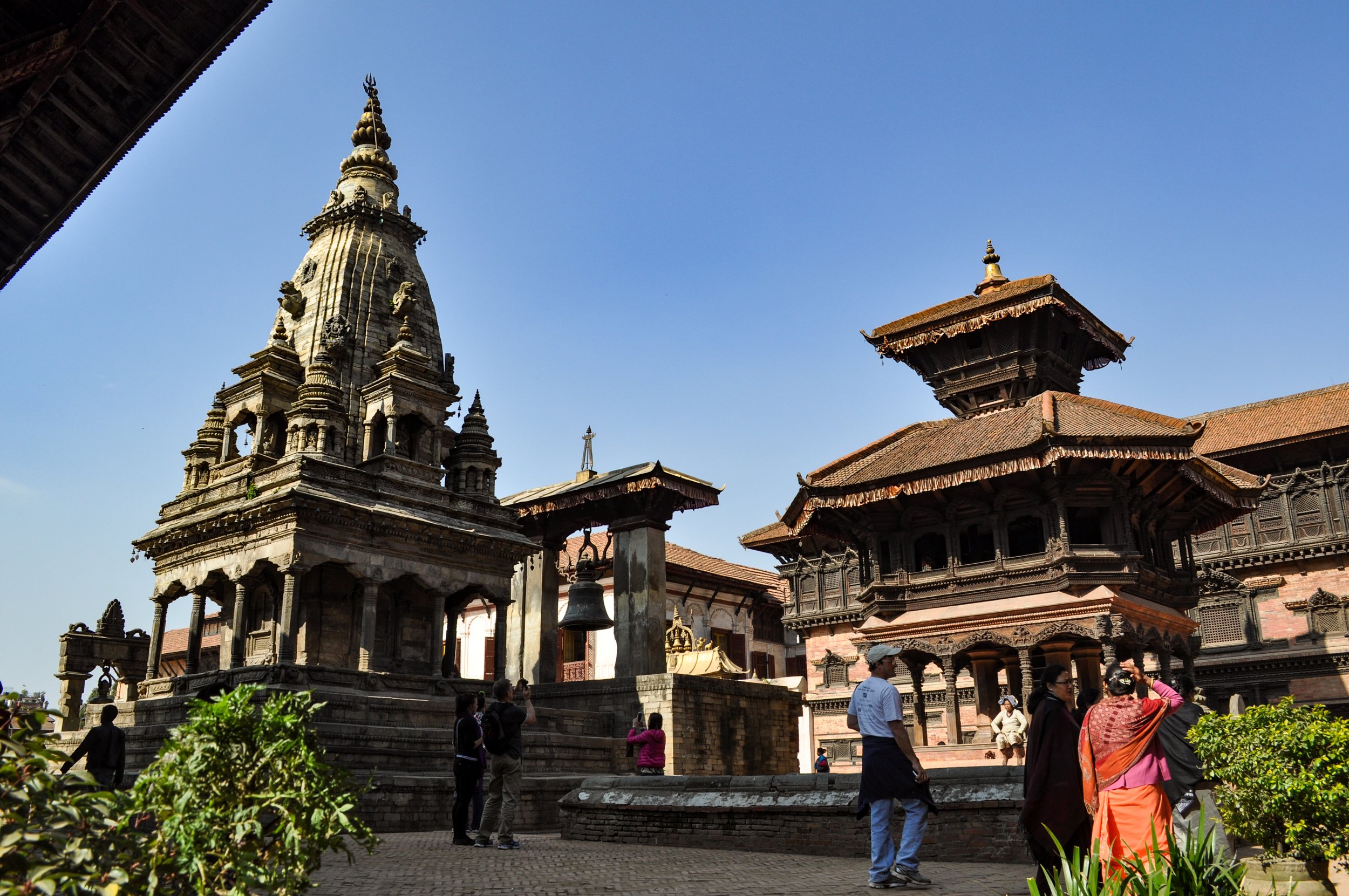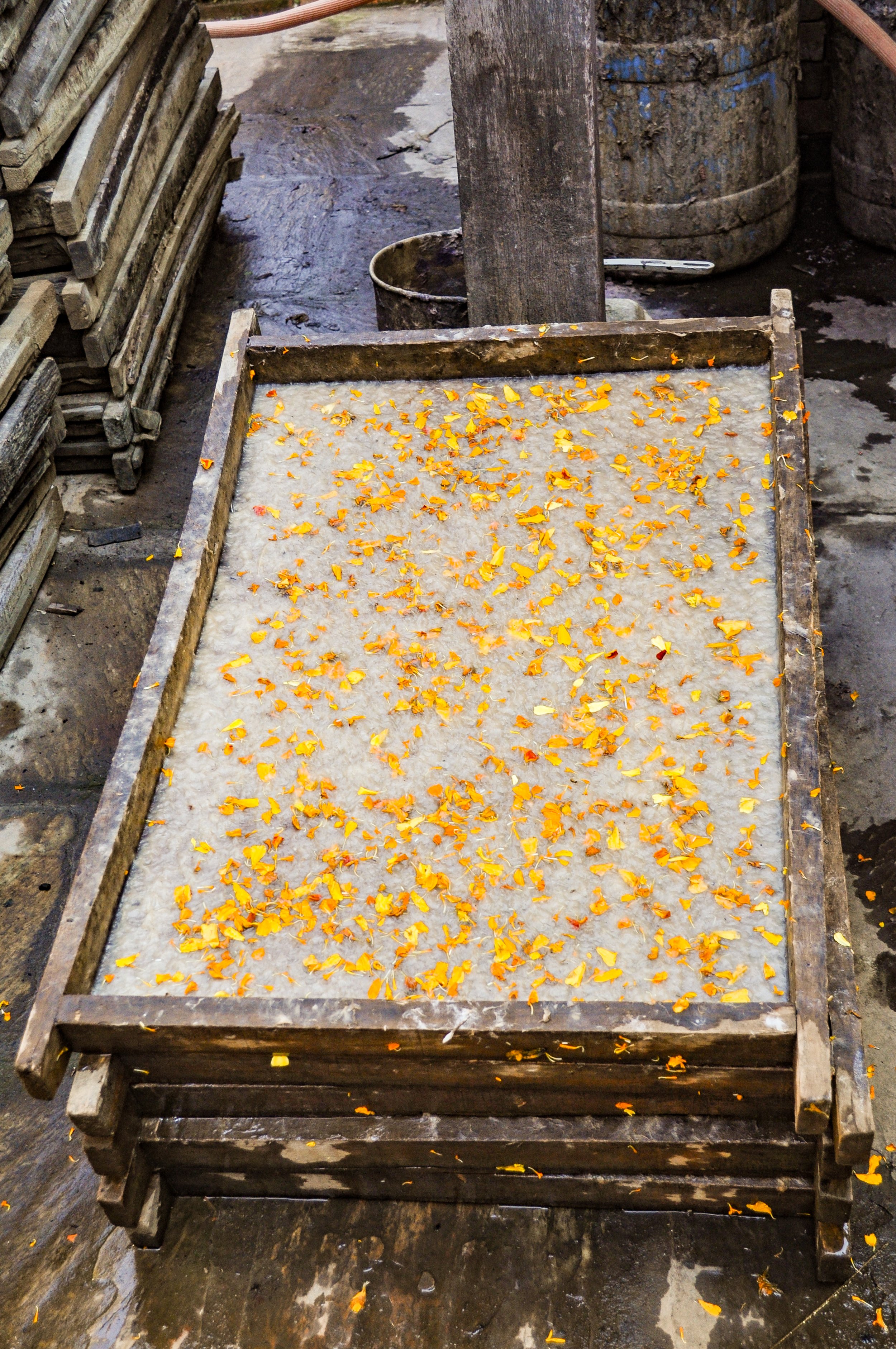

















The Peacock shop
November 29. Second day in Nepal. On the way back from Namobuddha monastery, our energy was renewed. It was like this short retreat had cleaned both of us from deep inside. The weather was warm again and we started to feel really hungry. The last rice bowl I took had been very early the day before with the monks, and we felt like taking a good heavy breakfast. I still couldn't figure out what would follow and as I had decided to keep trusting the guide, we got back to the motorbike and left the magical Namobuddha behind us.
After a few miles driving down the hill, we stopped in front of a huge old door. Tourists and local people were waiting there: it was the entrance of the ancient city of Bhaktapur. Located at around 13km east of Kathmandu, Bhaktapur is an historical city built in the 14th century. At this precise moment I had no idea how lucky I was to be visiting this ancient city before the devastating earthquake that would occur two years later, in 2015.
We parked the motorbike, payed my tourist entrance, and started the visit by searching a place for breakfast in the Durbar Square. Shortly after we found the perfect place and ordered coffee and pankackes. I took a seat between all this ancient temples, just closed my eyes and relaxed. Despite de agitation all around, we could feel the peaceful atmosphere. The warm morning sun softly caressed my face, and meanwhile I was daydreaming, I understood why Bhaktapur was listed as a World Heritage Site by UNESCO.
As we started to walk around the city and passing through the small streets, I felt like time had stopped. I had never been in such an ancient place like this before. The wierdest thing was the mix between the very modern western people and the very ancient architechture and surroundings. Everything seemed to co-exist peacefully. It was like being in a different dimension of spacetime.
We arrived in front of a small wooden door with a cute peacock sculpted on it, it was "The Peacock Shop". Curiosity started to invade me, and my attention was captured by the view of a big art workshop. My guide came to me and told me I was about to discover the traditional lokta paper making process. I was delighted and excited.
I learnt that this paper is actually made from a plant called Lokta, in scientific name : Daphne Cannabina. The arbust grows at around 2000 meters hight in the Himalaya’s rural regions of Nepal. It is an eco-friendly paper that has been used since the 12th century for several puposes such as writing mantras or Bouddhist’s prayers; more recently for government legal documents or official correspondence.
We went through the ground floor, and we discovered the first step of this traditional paper making process. The barks of lokta are actually kept inside the water for a week for softening. After that it is boiled for 48 hours and then beaten down to a pulp. The lady invited us to follow her upstairs to the rooftop and explained that this pulp is spread on wooden frames and then placed outside for natural sundrying. After that, the sheet is removed from the frame so that the natural paper is ready for dying and decorating. The result of this pocess is a soft unique fibrous paper sheet, each side and paper piece being different from one another. Some of them, as shown in the photos, have already been decorated with bright orange rhododendrons petals before sundrying.
The next step is dying, mask making, decorating and silk screen printing. I totally felt in the right place at that moment. Without really expecting, I was truly living my dream: these women working here had kindly shared their traditional knowledge with me and I was incredibly thankful.
At the end, they showed us the coloured ritual Bouddhist masks that were traditionnaly made in papier maché, huge lokta papers with beautiful silk screened patterns such as om, ying and yiang.... and painted with the brightest natural pigments I have ever seen. Red, black, deep green, purple papers everywhere. In the shop, where they sold the greeting cards, notebooks, photo albums, all the natural papers were exposed as well as lots of wonderful hand crafted items. Of course, I bought some souvenirs, we thanked the lady and left Bhaktapur riding back to Kathmandu.
These two days had been definitely full of new and unforgettable things, people, places and feelings.
Next Step : Himalayas!
